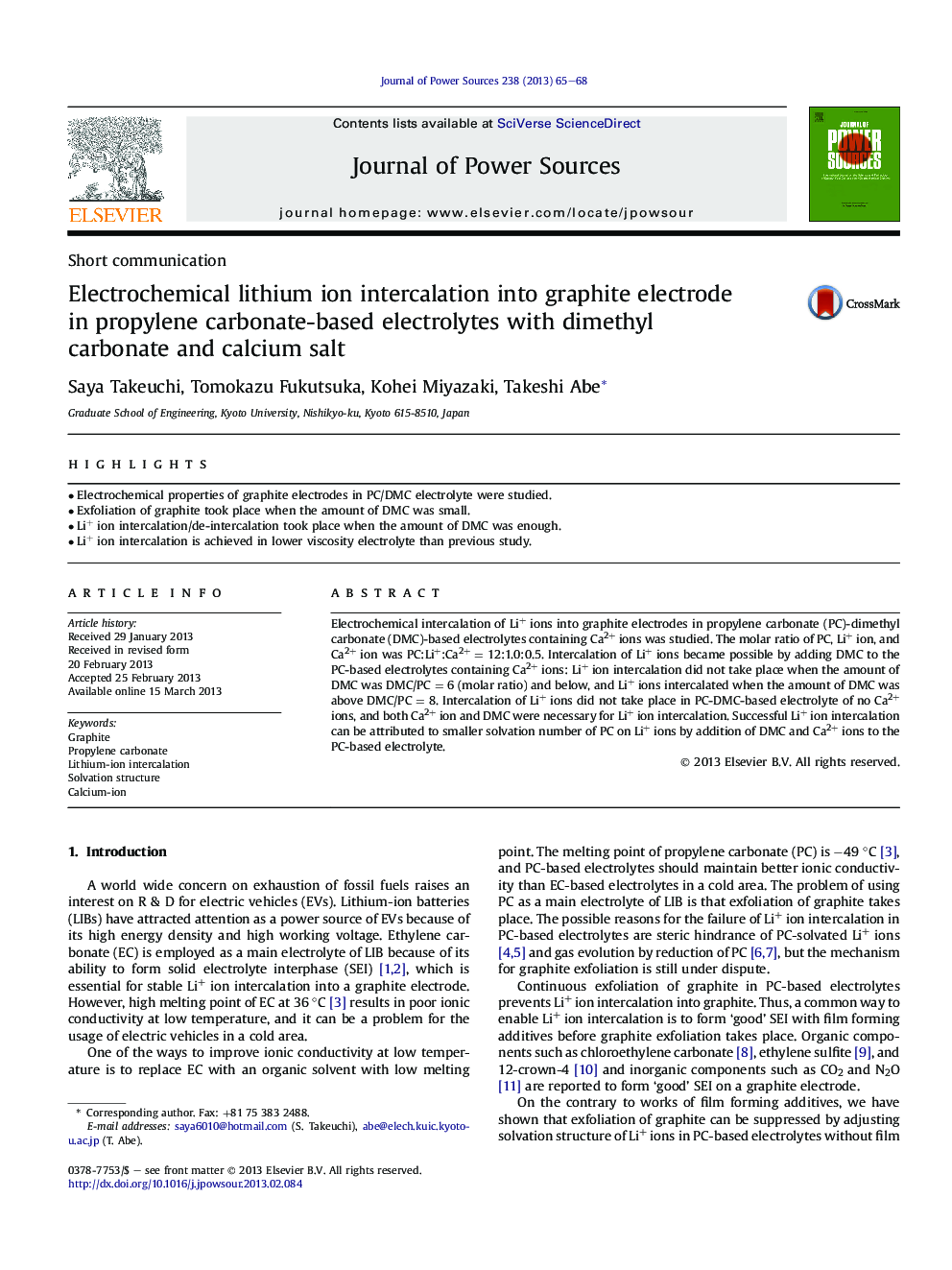| Article ID | Journal | Published Year | Pages | File Type |
|---|---|---|---|---|
| 1284370 | Journal of Power Sources | 2013 | 4 Pages |
•Electrochemical properties of graphite electrodes in PC/DMC electrolyte were studied.•Exfoliation of graphite took place when the amount of DMC was small.•Li+ ion intercalation/de-intercalation took place when the amount of DMC was enough.•Li+ ion intercalation is achieved in lower viscosity electrolyte than previous study.
Electrochemical intercalation of Li+ ions into graphite electrodes in propylene carbonate (PC)-dimethyl carbonate (DMC)-based electrolytes containing Ca2+ ions was studied. The molar ratio of PC, Li+ ion, and Ca2+ ion was PC:Li+:Ca2+ = 12:1.0:0.5. Intercalation of Li+ ions became possible by adding DMC to the PC-based electrolytes containing Ca2+ ions: Li+ ion intercalation did not take place when the amount of DMC was DMC/PC = 6 (molar ratio) and below, and Li+ ions intercalated when the amount of DMC was above DMC/PC = 8. Intercalation of Li+ ions did not take place in PC-DMC-based electrolyte of no Ca2+ ions, and both Ca2+ ion and DMC were necessary for Li+ ion intercalation. Successful Li+ ion intercalation can be attributed to smaller solvation number of PC on Li+ ions by addition of DMC and Ca2+ ions to the PC-based electrolyte.
